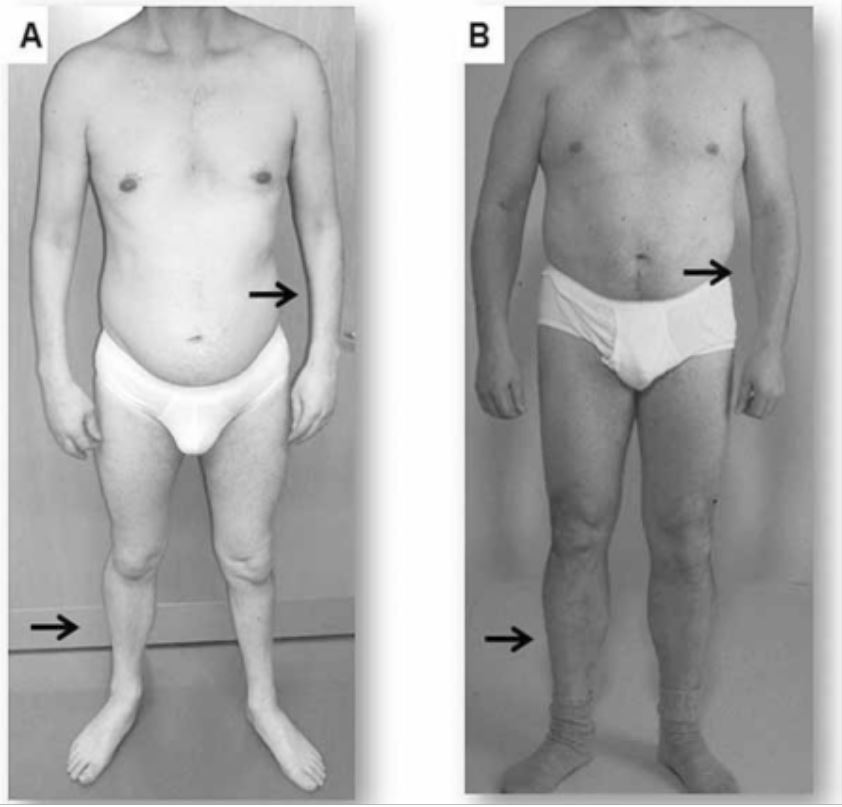Playlist
Show Playlist
Hide Playlist
Other Muscular Dystrophies
-
Slides Other Muscular Dystrophies.pdf
-
Download Lecture Overview
00:01 In this lecture, we're going to talk about some other muscular dystrophies. 00:05 Again, this is a class of conditions that are degenerative muscle disorders that are inherited. 00:10 And here we're going to talk about some of those that are less common. 00:15 There are five names, five other muscular dystrophies that I'd like for you to know. 00:20 One is FSHD or Facioscapulohumeral muscular dystrophy, Scapuloperoneal muscular dystrophy, Emery-Dreifuss muscular dystrophy, oculopharyngeal muscular dystrophy and mitochondrial myopathies. 00:37 For most of these conditions, they're named after the sight of weakness. 00:41 So with Facioscapulohumeral muscular dystrophy, the weaknesses in the face, the proximal muscles of the limb-girdle and the humerus, the Facioscapulohumeral regions. 00:52 For Scapuloperoneal muscular dystrophy, the weakness occurs in the scapula and the perinatal muscles. 00:59 And oculopharyngeal muscular dystrophy affects the ocular muscles of motility of the eyes and the pharynx swallowing in head movement. 01:08 So this will tip us off to the clinical presentation of many of these disorders. 01:13 But two we're going to focus on specifically in this lecture. 01:17 Let's start with FHSD, Facioscapulohumeral muscular dystrophy, Again, this is a muscular dystrophy. 01:25 It is inherited so patients present either with the family predisposition or with symptoms early on in their young adolescence or teenage years. 01:38 It is a muscular dystrophy so the problem is with degeneration of the muscles and FSHD affects several very typical muscle groups. 01:47 First is the face and this condition can present with bifacial weakness, one of the only muscular dystrophies that we see that presents with prominent bifacial weakness. 01:56 The other condition would be myotonic dystrophy and those are two to think about with prominent bifacial weakness in this situation. 02:04 There's scapular winging or scapular weakness, and we see that with winging or weakness of the scapula that's prominent in this condition. 02:12 There's humeral weakness and that's weakness of the proximal arm as you can see here, in the schematic. 02:17 It's often asymmetric. 02:19 And this presentation should really tip us off to be concerned about FHSD muscular dystrophy. 02:28 The second is Emery-Dreifuss syndrome. 02:30 This is another muscular dystrophy so degenerative muscle disorder that is inherited. 02:35 Patients often present in their teenage years. 02:38 This was named after two physicians, Emery and Dreifuss, who noticed an inherited syndrome that ran in family in Virginia. 02:47 Patients often develop symptoms early by around the age of 10 years or in their teenage years. 02:53 This is a slowly progressive muscular dystrophy that has prominent weakness in the proximal upper extremities that scapular wingings, the muscles around the scapula and the distal lower extremity as you see in the schematic here. 03:08 This condition can present with prominent cardiac conduction abnormalities. 03:12 We don't see that with FSHD and we do see conduction abnormalities with Emery-Dreifuss. 03:18 And that's two important differences in these two types of muscular dystrophy. 03:23 In this condition, weakness of the muscles that make up the shoulder and upper arms and the calf muscles of the legs is prominent and that should tip us off to a diagnosis of Emery-Dreifuss syndrome.
About the Lecture
The lecture Other Muscular Dystrophies by Roy Strowd, MD is from the course Hereditary Neuromuscular Disorders.
Included Quiz Questions
Which of the following clinical characteristics is associated with facioscapulohumeral MD?
- Patients usually have a family history.
- The facial muscles are spared.
- The lower extremity is more impacted than the upper extremity.
- The disease typically presents in late adulthood.
- Cardiac abnormalities are common.
Which of the following clinical characteristics is typical of Emery-Dreifuss MD?
- Cardiac abnormalities are common in this disease.
- The disease is predominately seen in boys.
- Patients present shortly after birth.
- Calf atrophy is typical
- Shoulders and upper extremity muscles are usually spared.
Customer reviews
5,0 of 5 stars
| 5 Stars |
|
5 |
| 4 Stars |
|
0 |
| 3 Stars |
|
0 |
| 2 Stars |
|
0 |
| 1 Star |
|
0 |




